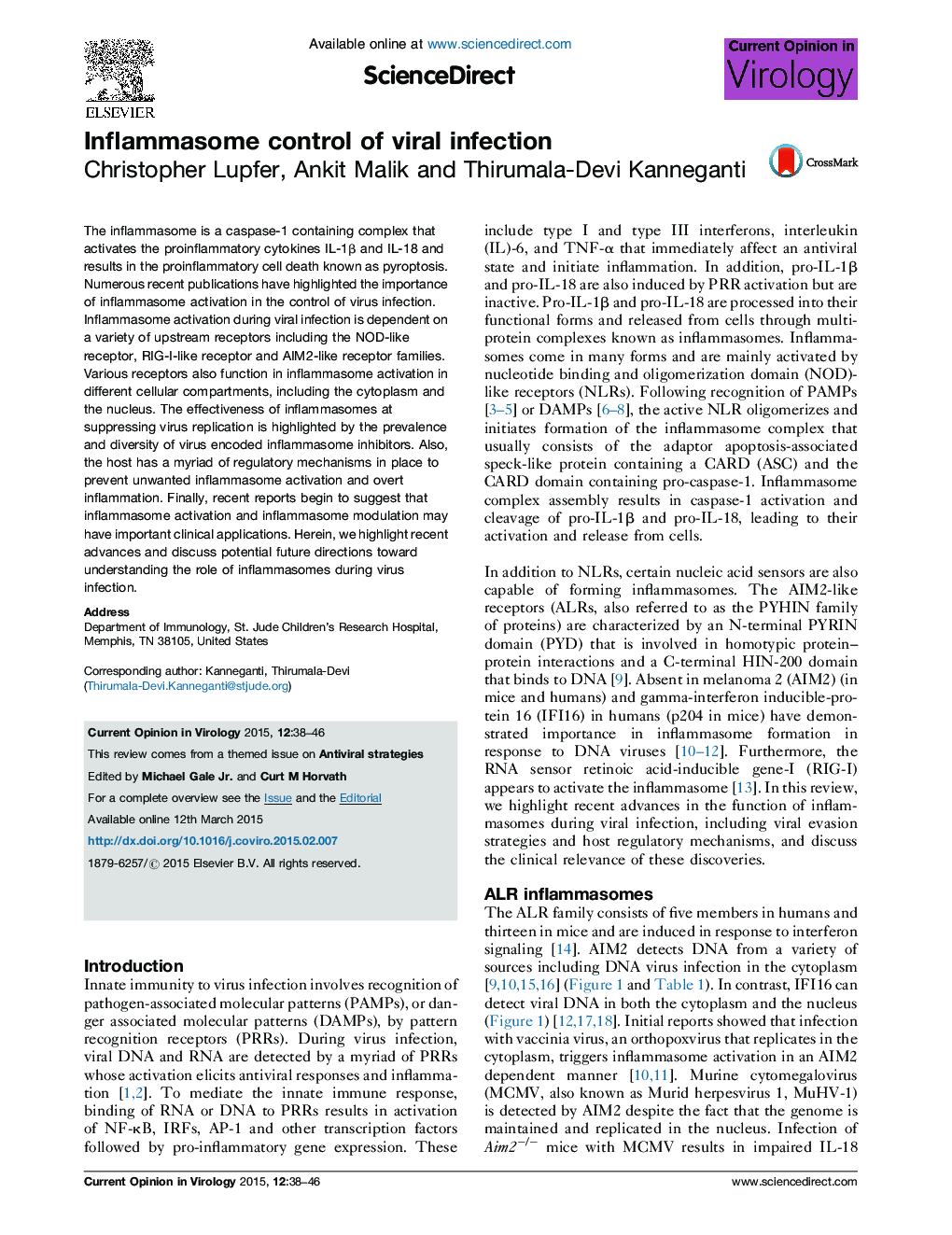| Article ID | Journal | Published Year | Pages | File Type |
|---|---|---|---|---|
| 5806688 | Current Opinion in Virology | 2015 | 9 Pages |
â¢Advances in ALR mediated inflammasome activation in response to viral DNA.â¢Viral virulence factors that impair inflammasome activation.â¢Host regulation of inflammasomes to prevent unwanted inflammation.â¢Recent advances in understanding NLRP3 inflammasome activation during virus infection.â¢Potential clinical roles for inflammasome activation.
The inflammasome is a caspase-1 containing complex that activates the proinflammatory cytokines IL-1β and IL-18 and results in the proinflammatory cell death known as pyroptosis. Numerous recent publications have highlighted the importance of inflammasome activation in the control of virus infection. Inflammasome activation during viral infection is dependent on a variety of upstream receptors including the NOD-like receptor, RIG-I-like receptor and AIM2-like receptor families. Various receptors also function in inflammasome activation in different cellular compartments, including the cytoplasm and the nucleus. The effectiveness of inflammasomes at suppressing virus replication is highlighted by the prevalence and diversity of virus encoded inflammasome inhibitors. Also, the host has a myriad of regulatory mechanisms in place to prevent unwanted inflammasome activation and overt inflammation. Finally, recent reports begin to suggest that inflammasome activation and inflammasome modulation may have important clinical applications. Herein, we highlight recent advances and discuss potential future directions toward understanding the role of inflammasomes during virus infection.
